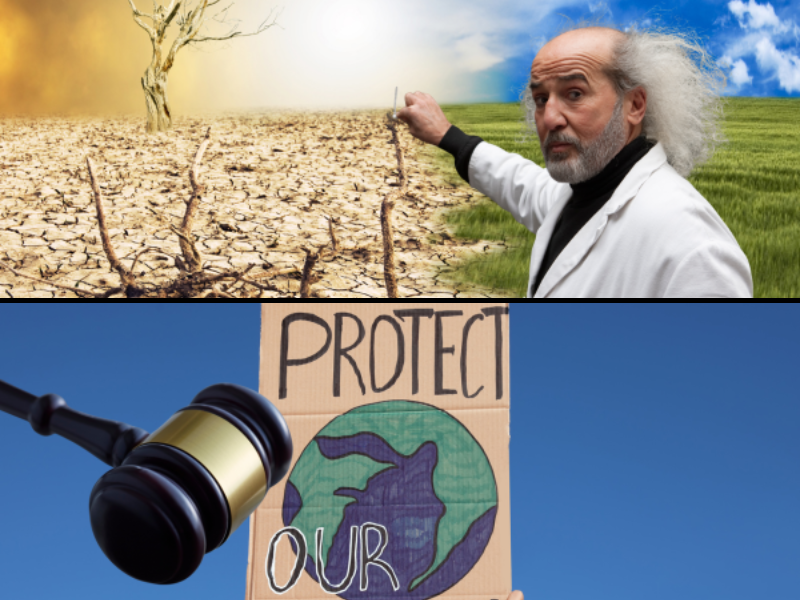In horrific moments etched forever in our memories, Islamist radicals murdered 6,500 innocent people–including more Americans than died at Antietam, previously the bloodiest single day in our nation’s history. They also devastated the heart of Manhattan’s financial district and part of our military command center–sending shock waves through America’s economy, infrastructure, and tranquility.
Within 10 days of the September 11 attack, the Dow Jones industrial average plummeted 1400 points, the Nasdaq composite index lost another 300 points, and Americans’ net worth plunged by more than $1 trillion. Though the market has clawed its way upward since then, many sectors remain severely battered.
The airline industry is expected to lose nearly $7 billion for the year; falling tax revenues will affect numerous government programs; and layoff announcements and anemic or negative GDP growth rates raise the specter of another recession. Indeed, many analysts say the question is not whether there will be a recession–but how long and painful it will be, how much wealth and income will disappear, and how many jobs will be lost.
The terrorists’ crime against humanity has left America bloodied, but unbowed, angry and united. It has brought out the best in our people, our Congress, and our President–ending our innocence perhaps, but awakening a sleeping giant and steeling our resolve. “Whether we bring our enemies to justice, or bring justice to our enemies,” President Bush promised, “justice will be done.”
Policies and priorities
The human and physical devastation has led to a long-overdue reassessment of the many ways politicians, bureaucrats, social activists, spies, loose lips, and simple lethargy weakened and compromised our intelligence and law enforcement capabilities, immigration safeguards, airport security, and military readiness. These unforgivable lapses have already resulted in unspeakable carnage. But we are finally taking steps to cure the defects and prevent further terrorism.
The economic devastation has made clear the need for an immediate economic stimulus package. Many say it should include a capital gains tax cut, immediate implementation of the 10-year tax cut plan enacted earlier this year, and a new law allowing companies to “expense” equipment in the year it was purchased.
However, a vitally important question remains unanswered. Will we also undertake a long-overdue reassessment of our nation’s energy, environment, and regulatory policies?
Regulations alone impose a massive hidden tax of over $800 billion a year, often for little economic, environmental, or workplace safety benefits. A luxury we can ill afford in the best of times, today they are a cement life preserver for a drowning man. We need a tax cut here, as well.
We are at war. The battlefields are not halfway around the globe, but right here in the United States, and the innocent victims are our own families, friends, neighbors, and coworkers. For the first time since the War of 1812, we ourselves are under attack.
Energy realities and mythologies
Winning the new war against terrorism will require a long, arduous campaign–one that will be infinitely more difficult if America’s economy, infrastructure, and people cannot sustain the effort. This is the reality in which we must now reexamine our energy policies. Not in the America that existed before September 11, not in some academic ivory tower, and certainly not in the PC world of environmental politics. Defending and rebuilding requires resources.
Secure supplies of affordable energy are the backbone of our economy. Rebuilding our economy and climbing out of the looming recession will require vast amounts of energy. Waging a protracted air and special forces campaign on multiple fronts half a world away will require still more.
The Persian Gulf War required 450,000 barrels of oil every day–four times what Allied soldiers needed to liberate Europe from the Nazis in World War II–and the Department of Defense accounts for 80 percent of all the energy the entire federal government uses, 75 percent of it in the form of jet fuel.
Today, we import 57 percent of our oil, compared to 35 percent when the 1973 Arab oil embargo crippled our economy. Even worse, a quarter of all the oil we use comes from the Middle East, and 850,000 barrels a day come from Iraq! Unless we expand our domestic production, by 2010 the petroleum to power our economy and military will be over 60 percent foreign, over 33 percent Middle Eastern, and more than a million barrels Iraqi. The impact on our economy, national security, and foreign policy will be incalculable . . . and intolerable.
Much of what we spend on imported oil ends up in countries that support or condone terrorism. Some even bankrolls terrorist operations. Jobs that could go to American workers go overseas instead, along with billions in tax revenues and invaluable technology and expertise. Our options for ending the terror are too easily influenced by our reliance on foreign oil, and terrorist attacks could too easily disrupt our international supply lines.
Singing out of tune
And still we hear the same tiresome chorus from the environmental elites and anti-energy members of Congress.
“There is little oil left in America.” Hogwash.
Government geologists say the Arctic National Wildlife Refuge could hold between 6 and 16 billion barrels of recoverable oil. Federal lands off our coasts could contain an additional 64 to 88 billion barrels, the Rocky Mountains and other onshore regions many billions more.
That’s 250 to 375 years’ worth of imports from Saddam Hussein. Turned into gasoline, it would power California’s cars and trucks for 200 to 325 years.
But the vast majority of these resources are off limits, due to unbending pressure from environmental extremists. The public’s right to know what’s there, and our right to find and produce it, continue to get brushed aside to satisfy specious claims about environmental risks or alternative technologies.
“Drilling will destroy the environment.” Baloney.
ANWR is the size of South Carolina: 19 million acres. Of all that land, only 2,000 acres along the flat, featureless “coastal plain” would actually be disturbed by drilling. That’s 5 percent of Washington, DC . . . 20 of the buildings Boeing uses to manufacture its 747 jets . . . less land than the terrorists devastated in New York City. And the drilling would be done in the dead of winter, using directional drilling technology, from ice pads that would melt in the spring.
Since 1980, platforms off the California coast have produced over 700 million barrels of oil, while spilling only 750 barrels. During this same period, natural seepage out of cracks in the ocean floor discharged more than 1 million barrels into California coastal waters.
“Greater energy efficiency eliminates the need to drill.” Malarkey.
Senator Dianne Feinstein (D-California) claims higher fuel efficiency standards for cars and SUVs could save as much oil as we might get from ANWR. Yes, we need to conserve. But we also need to drill, or U.S. oil production will continue its freefall, and our dependency on imports will grow.
More importantly, existing mileage standards have already resulted in smaller, lighter, less-safe cars that have cost the lives of some 40,000 Americans, according to USA Today. Tighter standards would mean more lost lives.
“Renewable fuels can eliminate the need for imported oil.” Absurd.
Wind, solar, and geothermal energy serve less than 2 percent of our energy needs–and that’s after taxpayers spent $20 billion in subsidies to boost their use. Replacing our petroleum-based economy with renewables would cost trillions of dollars, and the environmental costs would likewise be staggering.
Geothermal means power plants in areas like Yellowstone National Park. Using wind or solar power to produce just the additional electricity America will need by 2010 would require blanketing an area the size of Connecticut, Delaware, and Massachusetts combined with windmills or photovoltaic panels. Those gigantic windmills are notorious bird killers, and nothing can live under the solar panels. Plus, we’d still need new coal, gas, and nuclear plants to generate power when there’s no wind or sunlight.
“We should not develop America’s oil until we have an emergency.” Say what?
Osama bin Laden & Company just sent us a wakeup call from Hell. If their terrorist assault and the devastation it caused are not an emergency, pray tell, what is?
Confronting our implacable foes
As did our parents before us, this generation has a rendezvous with destiny. Once again, we face an enemy that would destroy our nation and way of life. We must root them out and defeat them, before they can unleash more horrors upon us.
Unlike previous generations, however, we must also confront pernicious foes here in our homeland. If we are to defend and rebuild America, we must have petroleum–and metals, timber, coal and nuclear energy, and a modernized energy distribution system.
The anti-development arguments have been ludicrous for two decades and more. To let them dictate our response to the unprecedented threats before us is to court disaster. It is time to confront them, and relegate them to the ash heap of history, to join the murderous zealots who seek to inflict their jihad upon us.
Paul Driessen has written extensively on climate change and other energy and environment issues for 25 years. He manages his own public relations and public policy firm (www.Global-CommPartners.net).



